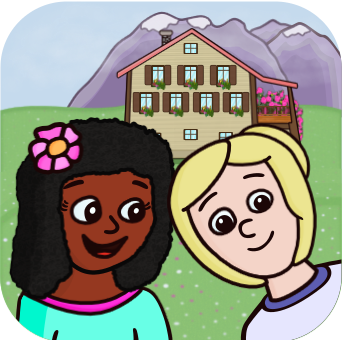
How can I create useful screen time for my toddler? What key factors should I consider when choosing an educational app that best supports my child in growth and is interesting and useful at the same time?
Parents probably ask these questions when they face the huge amount of children’s learning apps available in the online stores. If you are one of them, the following seven points can be a huge help for you if you feel stuck in making the responsible choice.
A good children’s app should be:
1. Easy-to-play
A good app boosts your preschooler’s confidence and keeps them motivated by providing easy-to-solve puzzles. Go for apps that include short and simple games rather than long and complicated ones to avoid frustration and loss of motivation.
2. Fun while learning
Making the learning process entertaining for your child will keep them intrigued when solving the puzzles. Factors include engaging activities, colourful, loveable design that builds little kids’ imagination and a cheerful background music.
3. Developing skills
Children learn and grow through play. An educational app should develop skills in a way your preschool child doesn’t notice they are actually learning. Some examples: varied activities that make your child drag and drop or collect objects will improve their sensory and fine-motor skills, tasks where they have to identify colours, shapes, sizes and patterns will make their cognitive and association skills grow while activities like moving or colouring objects freely will boost their imagination and creativity.
4. Celebrating your child’s success
Feeling of success is so important at your toddler’s age. Educational apps preferably offer awards to celebrate your toddler’s each accomplishment. This can be a loveable animation with a special music or a little surprise that makes your child smile and feel proud of their achievement.
5. Relaxed in the game process
Little children get overwhelmed easily by fast game processes. Choose apps that have soothing animations, pleasant music and a relaxed change between scenes instead of games with harsh visual or sound effects. This way, children will be able to focus on the intellectual challenges longer and will have more fun with the games.
6. Including parental control
When making the right choice, don’t forget to check that features meant for adults (like settings, rating or in-app-purchase options) are out of the reach of your preschooler. The little ones should only have access to the games inside the app. This will save you worries and the need for a constant control of your kid’s screen time.
7. Varied
Learning is more varied and the app stays interesting for your child if it offers a variety of activities and topics. At the same time, kindergarteners love if the topics are organized around a theme. Recurring elements in multiple roles like members of a family, little friends or mascots that appear in more games will make the app friendlier by creating a little world that invites children to play.
8. Delivering a positive message
Family togetherness, friends, the love of nature, animals and arts, healthy living are values we all appreciate. A good educational app delivers one or more of these messages which also helps your preschooler grow.

